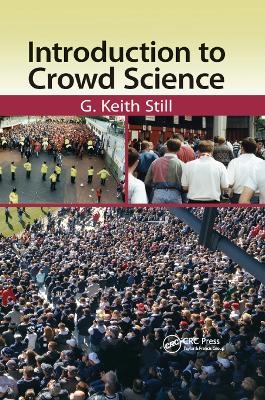
Introduction to Crowd Science
CRC Press (Verlag)
978-0-367-86670-9 (ISBN)
Includes Case Studies from a Range of Event Sites
Introduction to Crowd Science
examines the growing rate of crowd-related accidents and incidents around the world. Using tools, methods, and worked examples gleaned from over 20 years of experience, this text provides an understanding of crowd safety. It establishes how crowd accidents and incidents (specifically mass fatalities in crowded spaces) can occur. The author explores the underlying causes and implements techniques for crowd risk analysis and crowd safety engineering that can help minimize and even eliminate occurrences altogether.
Understand Overall Crowd Dynamics and Levels of Complex Structure
The book outlines a simple modeling approach to crowd risk analysis and crowds safety in places of public assembly. With consideration for major events, and large-scale urban environments, the material focuses on the practical elements of developing the crowd risk analysis and crowd safety aspects of an event plan. It outlines a range of modeling techniques, including line diagrams that represent crowd flow, calculations of the speed at which a space can fill, and the time it takes for that space to reach critical and crush density. It also determines what to consider during the event planning and approval (licensing/permitting) phases of the event process.
Introduction to Crowd Science
addresses key questions and presents a systematic approach to managing crowd risks in complex sites. It provides an understanding of the complexity of a site, that helps you plan for crowds in public places.
G. Keith Still lectures at a number of international universities including Manchester Metropolitan University, UK. He has lectured at the UK Cabinet Office Emergency Planning College since 1999 and developed the EPC’s Crowd Dynamics and Crowd Science materials and workshops as well as contributing to other safety-related courses. Still’s mathematical, human behavior modelling, and simulation tools have led to the development of a systematic blueprint for the crowd safety industry. His tools (Legion, Paramics UAF, Myriad, Shepard, Tawaf, DWELL, progressive crowd collapse and pressure modelling) have been used for the analysis of crowd risks in complex and built spaces for over a decade.
Introduction. Crowd risk analysis. Causality. Crowd science. Crowd and event modelling. Case studies and examples. Control room applications. The way forward. Appendices. Index.
| Erscheinungsdatum | 16.12.2019 |
|---|---|
| Verlagsort | London |
| Sprache | englisch |
| Maße | 156 x 234 mm |
| Gewicht | 421 g |
| Themenwelt | Geisteswissenschaften ► Psychologie ► Allgemeine Psychologie |
| Geisteswissenschaften ► Psychologie ► Sozialpsychologie | |
| Sozialwissenschaften ► Pädagogik ► Sozialpädagogik | |
| Sozialwissenschaften ► Soziologie | |
| Technik ► Bauwesen | |
| Technik ► Umwelttechnik / Biotechnologie | |
| ISBN-10 | 0-367-86670-6 / 0367866706 |
| ISBN-13 | 978-0-367-86670-9 / 9780367866709 |
| Zustand | Neuware |
| Haben Sie eine Frage zum Produkt? |
aus dem Bereich


